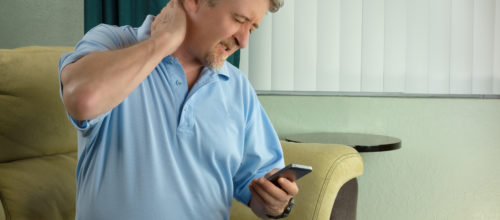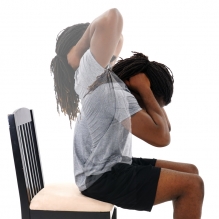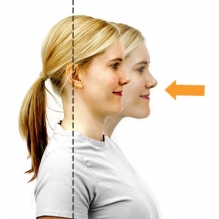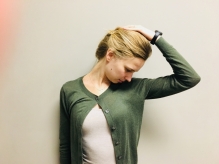
How to Address “Text Neck”
Each year, individuals throughout the world are using their smart phones, tablets, and other handheld devices more frequently. As much of the world practices social distancing to flatten the curve of the Covid-19 epidemic, reliance on these devices to remain in contact with others has become more widespread than ever. The use of these devices is convenient, but comes at a cost to our bodies, especially our spine.
“Text Neck” refers to repeated stress, postural changes and resultant neck, shoulder and upper back discomfort, which results from maintaining a poor, forward head posture while using handheld devices. Oftentimes, the longer one sustains these poor postures, the greater the symptoms. Symptoms can include stiffness and/or pain at the neck and upper back, headaches, and even radiating pain into the arms. Over time, more significant postural changes, including increased upper back curvature (kyphosis) and forward head postures may be observed. If not addressed and mitigated, these postural changes can hasten degeneration of the spine including discs and joints.
Prevention and treatment of these symptoms go hand in hand, and the recommendations are both simple and effective. Minimize excessive device usage and/or take frequent breaks. Position the device in a way that minimizes forward head posture and the associated stress. In the short term, the application of moist heat may be helpful in lessening muscle spasms and tightness through improvement of blood flow. Neck stretches are effective at relieving stiffness/tightness and postural activities can improve overall sitting and standing posture.
For those suffering symptoms associated with text neck, we have attached some appropriate activities that can be performed at home. Please feel free to reach out to one of our physical therapists with questions.
Seated Postural Correction:
Start in seated position with your hands on the back of your neck or across your chest, looking forward. Next, bend your torso forward by flexing your back. Then, straighten your back and extend it by raising your arms up as far as possible. Return to starting position and repeat 20 times.
Seated Chin Tuck:
Sit with good posture, slowly draw your head back so that your ears line up with your shoulders. Do not tip your head up or down, keep your eyes looking straight ahead. Hold for 5 seconds, repeat 20 times.
Levator Scapulae Stretch:
Rotate head to look over shoulder, then look down bringing chin toward shoulder. Gently place hand on head to further stretch. Hold 10 seconds, repeat 10 times.



